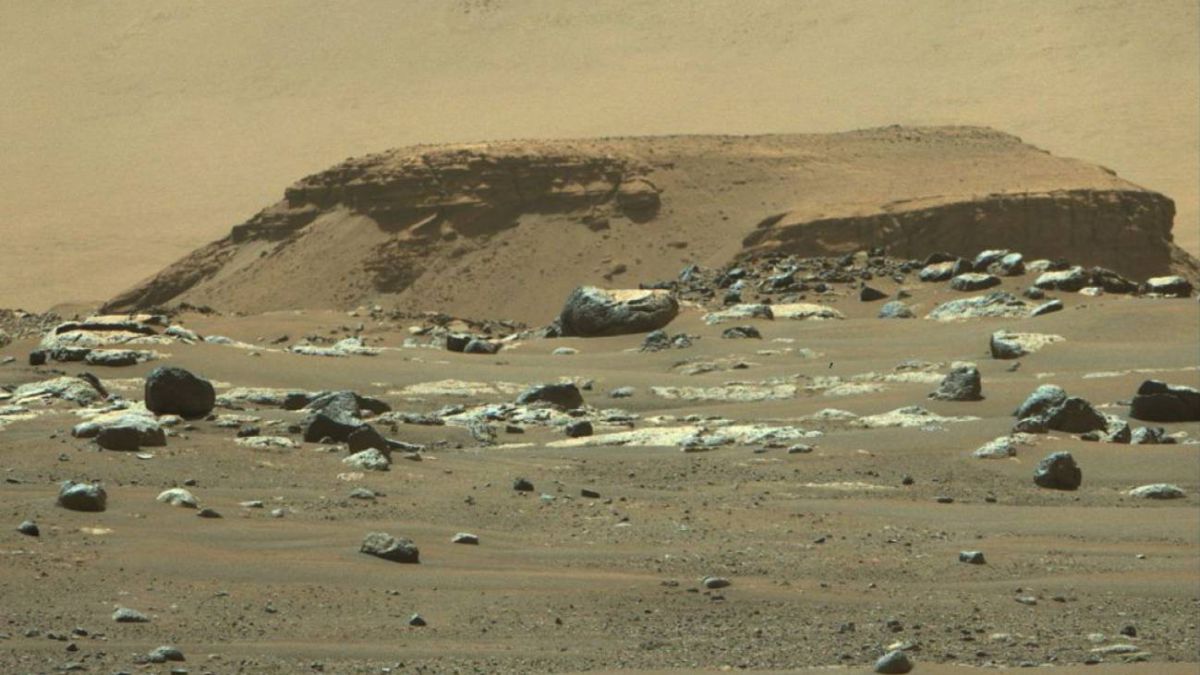Despite the fact that no phenomena have been known on Mars beyond the occasional sandstorm, new research suggests that the red planet may have a recent history of activity. Some studies that lead to think that the extraterrestrial planet is still volcanically active. In fact, scientists are trying to piece together the history of Mars, reconstruct the planet’s timeline. thanks to new NASA vehicles, such as Ingeniuty O Perseverance.
Little is known about Mars, but what several experts pointed out is that the red planet was millions of years ago much more humid and warmer than it is now. Thus, They understand that something had to happen for its atmosphere to be lost and for all the water to remain under its surface some 3 billion years ago. A whole phenomenon that remains a mystery despite advances in research.
Volcanic activity in an unknown area
According to the American media CNN, scientists pointed out that most of the volcanic activity on Mars had stayed about 3,000 or 4,000 million years ago. HoweverThe latest information and evidence coming from the red planet reveal that there has been volcanic activity in the last 50,000 years. IEven though it seems like many years to us, in astronomical terms it turns out to be very close to our date.
Some new data provided by the vehicles that circulate on Mars, discovering a totally unknown area so far within the region of Elysium Planitia -a plain in the middle of the planet-. It is a smooth, dark area that stretches for approximately eight miles. It is characterized by being surrounded by a 20-mile-long volcanic fissure in the fault system Cerberus Fossae; where the Martian crust has parted.
“This may be the youngest volcanic deposit ever documented on Mars,” The study’s lead author, David Horvath, a research scientist at the Institute for Planetary Sciences, said in a statement. “If we had to compress the geological history of Mars into a single day, this would have happened in the last second.”
A pyroclastic eruption
After analyzing the evidence, the scientists believe that, as the material was distributed on the surface of the planet, this eruption corresponds to a pyroclastic. That is, a volcanic eruption that happens when magma explodes due to the expansion of its gases or, what is the same, a situation similar to when they shake a soda.
“When we first noticed this deposit, we knew it was something special,” said study co-author Jeff Andrews-Hanna, an associate professor at the Lunar and Planetary Laboratory at the University of Arizona. “The deposit was unlike any other found in the region, or indeed on all of Mars, and more closely resembled the features created by the oldest volcanic eruptions on the Moon and Mercury “, Add.
There could be life on Mars
Since landing in November 2018, the InSight Lander from NASA -which is about a thousand kilometers away- has focused on studying the seismic activity of the red planet. Since then two Marsquakes, that is to say, earthquakes not produced by tectonic plates, since Mars does not have any. Therefore, scientists point to magma moving inside the planet as the cause of these shakes.
“The young age of this deposit absolutely raises the possibility that there may still be volcanic activity on Mars, and it is intriguing that recent Marsquakes detected by the mission InSight have their origin in the Cerberus Fossae“Horvath said. Fissures that formed about 20 million years ago, when, they point out, groundwater came to the surface. And it is that these volcanic deposits make scientists suggest that the red planet could have been habitable below the surface.
“The interaction of the rising magma and the icy substrate of this region could have provided favorable conditions for microbial life quite recently and it raises the possibility of life in this region, “said Horvath.

